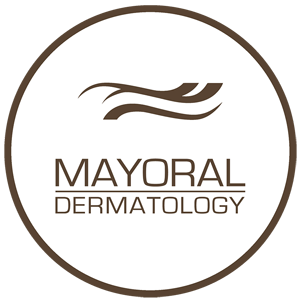Stretch Mark Removal Techniques That Work
Pregnancy or sudden and extreme weight gain may tear the dermis (the layer of skin just below the epidermis) and create elongated, silvery-pink scars called striae. Also known as stretch marks, these scars emerge when the skin is rapidly stretched, such as what occurs during the last few months of pregnancy or when someone gains many pounds in a short period. Usually marking the abdomen, thighs and places where fat is stored, stretch marks may begin as inflamed, itchy streaks due to the breakdown of collagen and elastin in the dermis. When the matrix comprising these two substances is damaged, it prevents the skin from resuming its normal condition. After inflammation subsides, the redness and itching also subsides. Unfortunately, postpartum women or individuals who quickly gain and then lose a lot of weight are left with unsightly stretch marks.
Can Stretch Marks Be Prevented?
Yes and no. Although genetics may play a minor role in whether a person gets stretch marks from pregnancy or weight gain, anyone can try to prevent them by keeping their skin as hydrated as possible using moisturizing skin lotions or baby oil. Keeping your skin healthy by eating a well-balanced diet can also contribute to maintaining sufficient collagen and elastin production as the skin experiences extreme abnormal stretching.
Is It Stretch Marks or Some Other Skin Condition?
Stretch Marks are recognizable by their distinct shape, color and texture. Initially, they will appear purplish or reddish as the skin experiences the normal inflammatory response to damage. As the skin tries to resume its pre-stretched condition after pregnancy or loss of weight, the vividness of the marks fades into much lighter, paler hues. Usually, stretch marks are vertical and range in length from several inches long to shorter than an inch. They feel softer than skin that is not affected by stretching and appear slightly indented, much like a surgical scar.
Unlike stretch marks on the abdomen, stretch marks on the thighs resemble short, broken spider veins. If you are not sure whether you have spider veins or stretch marks, make an appointment with one our Mayoral Dermatology specialists who will be happy to perform a complete examination on you and your skin condition.
Why Creams Do Not Work to Eliminate Most Stretch Marks
Stretch marks develop because the dermis, not the epidermis, suffers damage to cell functioning and the collagen/elastin fiber matrix responsible for the suppleness and “bounce-back” ability of that layer of skin. Over the counter creams claiming to improve the appearance of stretch marks cannot smooth out indentations or eliminate discoloration because they do not possess the technology offered by lasers to reach the epidermis, which is the actual site of the damage. Some skin creams containing retinol or hyaluronic acid may help reduce the severity of wrinkling by replenishing the dermis with high-grade, specialized moisturizers, but do little to improve stretch marks.
Stretch Mark Removal Techniques—Fast, Painless and Effective
V Beam laser therapy is one of the best and most popular treatments available to eliminate stretch marks. A new laser therapy that non-surgically removes scarring, wrinkling and other unwanted skin conditions, V Beam disperses heat into the dermis by emitting gentle but powerful wavelengths compatible with moisture in the skin. This moisture absorbs the laser energy and promotes scattering of heat into targeted areas while leaving normal skin untouched. Clients do not feel the laser beam’s heat due to applications of a special cooling spray during the treatment.
V Beam minimizes the scar-like appearance of stretch marks by initiating an inflammatory response that stimulates the immune system into fighting the “laser attack”. The skin begins to immediately resurface itself following treatment with V Beam by replacing vaporized skin cells with healthy keratinocytes in addition to new elastin and collagen. All of these actions help to fill in and smooth away indentations and improve coloring so that areas where stretch marks once existed become virtually indistinguishable from normal skin texture and tone.
For removal of stretch marks that remain purple or red, dermatologists may suggest using pulsed dye laser therapy, a slightly different type of laser treatment that eradicates damaged blood vessels responsible for the redness. Once the blood vessels are destroyed, the body naturally absorbs them, eliminating the “angry” color of some stretch marks.
V Beam and Pulsed Dye laser therapies provide long-lasting results that specifically improve the tone and texture of your skin. Many of our patients are so thrilled with their results that they often return for additional laser treatments performed on facial wrinkles and folds or to undergo skin rejuvenation treatments such as chemical peels and professional facials.
Both pulsed dye laser and V Beam laser treatments are performed at our Mayoral Dermatology facility and usually take less than 30 minutes. Patients do not suffer any downtime, discomfort from anesthesia or recovery issues. The number of treatments needed to achieve desired results depends on the severity of the stretch marks, the patient’s skin type and other factors that one of our specialists can more thoroughly discuss with you.


